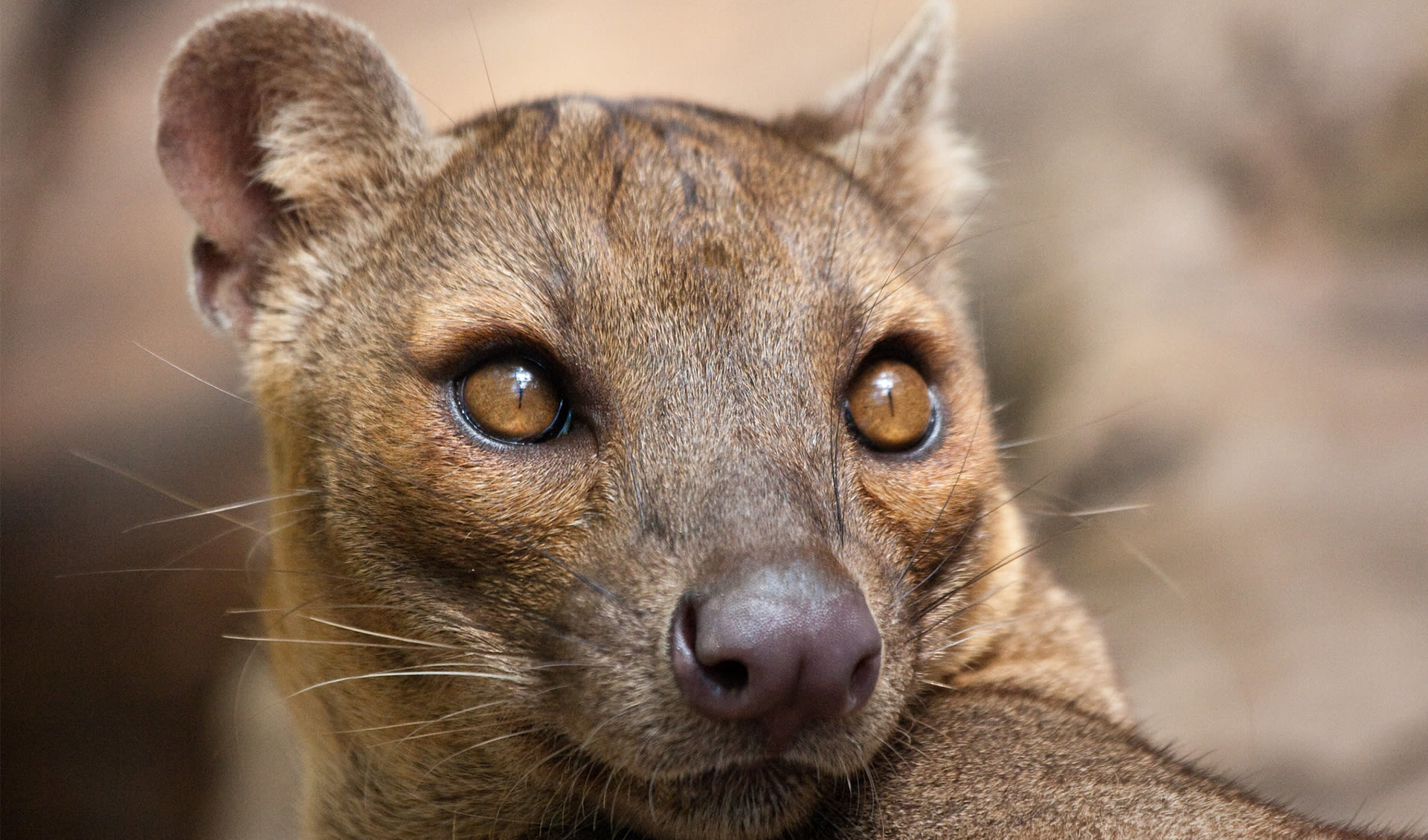As Madagascar’s largest carnivore, the fossa plays a pivotal role in the island’s ecological balance, preying on a variety of animals, including lemurs, which form a significant portion of its diet.
Resembling a small cougar in appearance, the fossa possesses a lean, muscular body, a long tail that aids in balance during arboreal activities, and a cat-like face. Males are generally larger than females, with an average length of about 76 cm (30 inches) from head to the base of the tail and weighing around 7 kg (15 pounds), making them formidable predators despite their relatively modest size. One of the fossa’s most remarkable adaptations is its semi-retractable claws and flexible ankles, which allow for efficient climbing and the ability to leap between trees head-first, showcasing its agility and prowess as an arboreal hunter.
The fossa exhibits versatility in its hunting habits, being active both day and night, which suggests a flexible adaptation to the availability of prey. Its habitat preference spans the diverse forests of Madagascar, from the dry deciduous forests to the dense rainforests, although its population is sparse and faces significant threats from habitat destruction and fragmentation.
Fossas have a unique mating system, with mating occurring on horizontal tree branches and lasting several hours, a testament to their arboreal lifestyle. Females can give birth to litters ranging from one to six pups, which are born toothless and blind. The pups are dependent on their mother for the first few months of life, weaning off after about 4.5 months and gaining independence around a year old. Sexual maturity is reached between three to four years, particularly in captivity, where their lifespan can extend to 20 years, providing valuable insights into their growth, development, and longevity.
Distribution
 Madagascar
Madagascar Official estimate
Official estimate
Anything we've missed?
Help us improve this page by suggesting edits. Glory never dies!
Suggest an editGet to know me
Terrestrial / Aquatic
Altricial / Precocial
Polygamous / Monogamous
Dimorphic (size) / Monomorphic
Active: Diurnal / Nocturnal
Social behavior: Solitary / Pack / Herd
Diet: Carnivore / Herbivore / Omnivore / Piscivorous / Insectivore
Migratory: Yes / No
Domesticated: Yes / No
Dangerous: Yes / No




